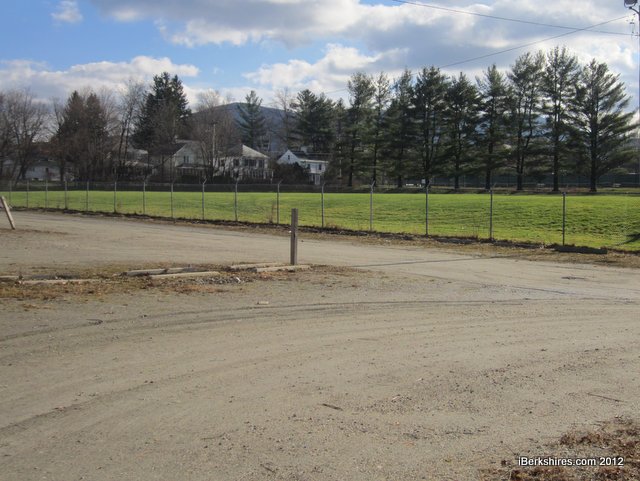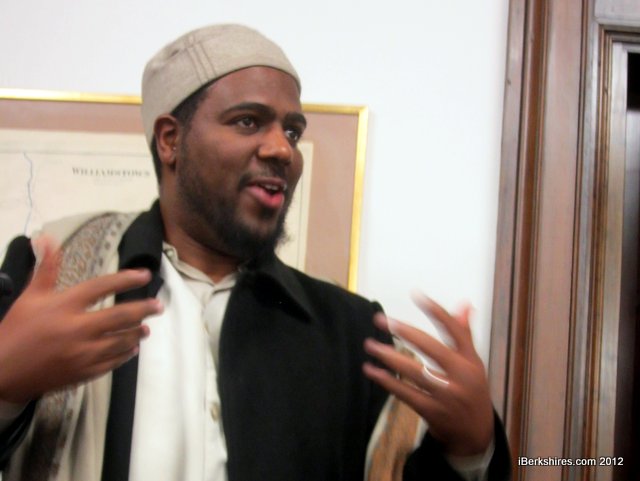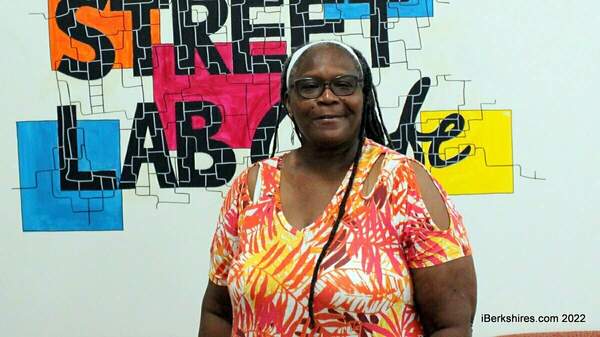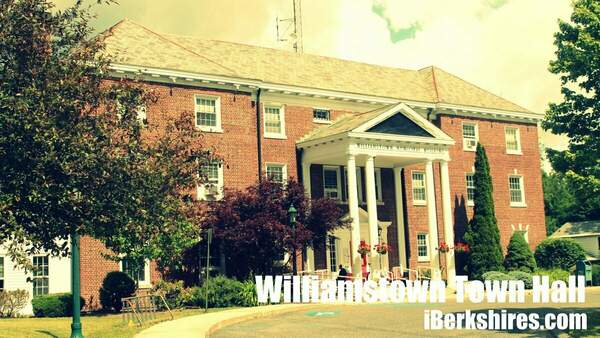Non-profit Asking Williams College for Land for Housing
|

Higher Ground is asking Williams College to donate unused land near Proprietor's Field for an affordable housing project.
|
WILLIAMSTOWN — While debate continues to rage over a proposal to use town-owned, conserved land to develop affordable housing, a local non-profit is moving forward with its plan to build government subsidized housing on land owned by Williams College.
Northern Berkshire Higher Ground has submitted two plans to the college for consideration by its board of trustees. Each plan would build at least 26 units of affordable housing on a parcel at the north end of Southworth Street, near the Proprietor's Field senior housing complex.
"We've been asked [by the college] to come up with a concept of what it could potentially look like," Higher Ground spokesman Bilal Ansari said last week. "So we've just completed two concepts that will go to the administration, and the administration will bring them to the board of trustees. ... If they agree to one of the concepts, and the land becomes Higher Ground's — and how that looks like, we don't know — we can look for funding."
Ansari said there were a number of models for control of the approximately three acres under consideration. The land could be transferred to Higher Ground outright, the non-profit could enter into a 100-year lease or some other option might be found, he said.
The important thing, he said, is that the college is open to the principle of using its land to address the town's affordable housing needs, he said. And it is not the first time that has happened.
"From my understanding, historically, Proprietor's Field was also land that Williams College once owned," Ansari said. "There was a need, and they gave up the land to meet the need.
"This is the college meeting its mission statement to further the relationship between Williams College and the town. That goes back to the very beginning of how this college was able to maintain itself. Many people left this college (in 1821) to go build Amherst, and it was the townspeople who kept the college here.
"Now it's kind of like the role has reversed in this mutual exchange of meeting each other's needs."
Ansari is a chaplain at the college and also serves on the town's Affordable Housing Committee, which is looking at developing a number of town-owned parcels, including the former town garage site on Water Street, the former Photech Mill site on Cole Avenue and 30 acres of open land off Stratton Road that has generated opposition from a newly formed conservation group.
Unlike the so-called Lowry property off Stratton Road, much of which is currently in agriculture, most of the Williams College parcel under consideration is unused. Higher Ground is also asking the college to consider devoting land currently used as a parking lot for the affordable housing project, Ansari said.
Higher Ground wants to maximize about 2.2 buildable acres at the site, but maximizing density may not be the best option for the population for whom the housing is intended, Ansari said.
"The two concepts have as little as 26 units and as many as maybe 40," Ansari said. "But the 40 would be townhouses. The population we're looking to serve — they're elderly."
And two-story units or second-story units may not be ideal.
Higher Ground was formed last year in the aftermath of Tropical Storm Irene, which wiped out most of the Spruces Mobile Home Park on Main Street. The non-profit's goal is to serve the entire population of the retirement community, and the Southworth Street proposal aims to serve the former Spruces residents forced from their home after the August 2011 flooding.
"The displaced population is still a live, ongoing need that we're constantly trying to help," Ansari said. "We did an internal, unscientific mailing and [phone survey], and in that survey we found that of the 115 displaced [families], a little more than half said they would want to move back, and many of those are actually on the waiting list for Proprietor's Field, but there is no room there."
Higher Ground also makes counseling services available to both displaced Spruces residents and the 66 one- and two-person residences who still live in the park.
"The other side of Higher Ground's mission is just the mental and spiritual well-being [of residents]," Ansari said. "So we have somebody on staff who case manages to see where they are and what their fears and frustrations are.
"There's a lot of one-on-one. There are some people having problems maybe meeting their rent or have been kicked out of their son's basement or off their daughter's couch. So we exhaust every resource we can to try to help them."
|

Higher Ground and Affordable Housing Committee member Bilal Ansari.
|
 I've learned that none of these routes — the Affordable Housing Committee, which is a town committee, or Higher Ground, which is a non-profit — is easy." I've learned that none of these routes — the Affordable Housing Committee, which is a town committee, or Higher Ground, which is a non-profit — is easy."
— Bilal Ansari
|
To tackle the part of its mission relating to housing development, Higher Ground enlisted the help of Boston-based non-profit the Women's Institute for Housing and Economic Development. The local group used grant money from New York-based Local Initiatives Support Corp. to hire the Boston group.
"We achieve our mission by developing affordable and supportive housing by bringing our development expertise and project management capacity to communities across Southern New England while working in partnership with local organizations to create and/or preserve quality, affordable housing," according to the Women's Institute's website.
Ansari said the Women's Institute will be an essential partner when it comes to funding construction.
"They have a great relationship with the folks in the state who potentially could bring the money to bear to actually build something," Ansari said. "The Women's Institute has an office right there in Boston, so the have those relationships to remind them there is more to the state than the eastern third."
Higher Ground hopes to hear back from the Williams College Board of Trustees after its next regularly scheduled meeting in January, Ansari said. If the non-profit gets the go-ahead, it will put together grant requests for the 2014 funding year. So, like the current proposals for town-owned land, any new development on Southworth Street is years away from coming to fruition.
Ansari has at times expressed frustration with the pace of the process at town committee meetings, but in an interview at his Paresky Center office last week, he was more accepting of that process.
"I've learned that none of these routes — the Affordable Housing Committee, which is a town committee, or Higher Ground, which is a non-profit — is easy," he said. "Both have their challenge, and it's a learning process of how things are done in this town with the rural environment we have, which is really a blessing to have. How do you preserve that and at the same time meet the needs of a very vulnerable group of people who are in harm's way?
"Whatever frustrations you feel going through a non-profit or town process, they pale when you think about [residents'] anxieties and their fears. You just work through it. You don't take anything to heart."
Updated on Tuesday, Dec. 18, to clarify in the lede that funding for the housing may come from a variety of sources.
Tags: affordable housing, Higher Ground, senior citizens, senior housing, Williams College,
 I've learned that none of these routes — the Affordable Housing Committee, which is a town committee, or Higher Ground, which is a non-profit — is easy."
I've learned that none of these routes — the Affordable Housing Committee, which is a town committee, or Higher Ground, which is a non-profit — is easy."
















